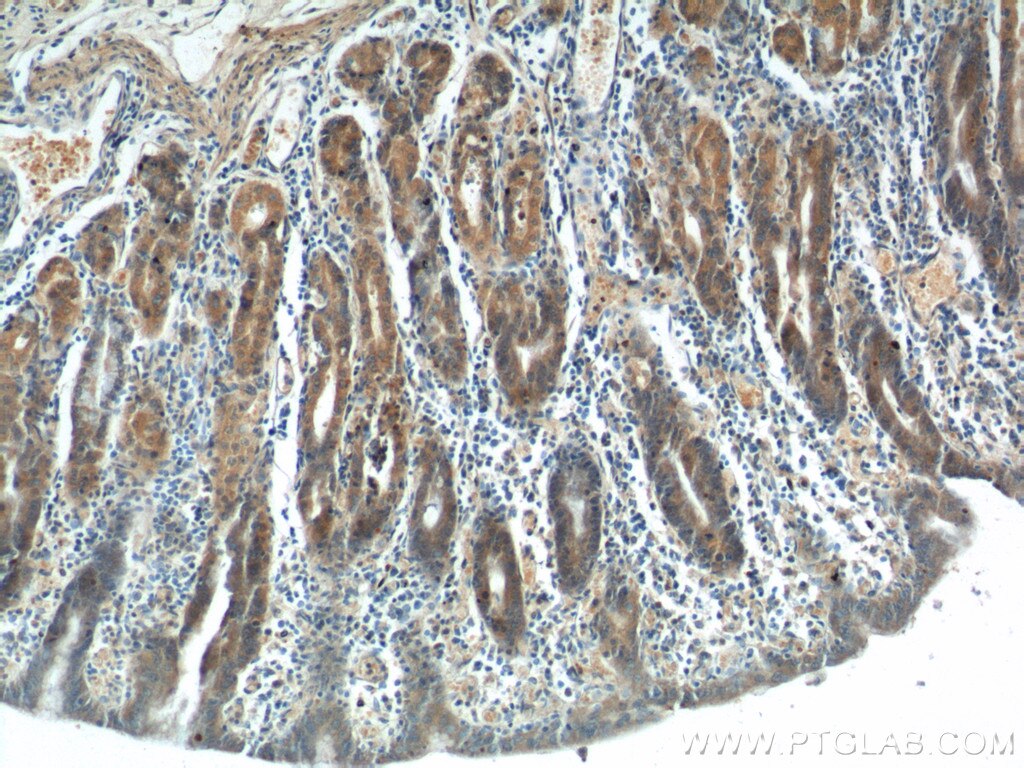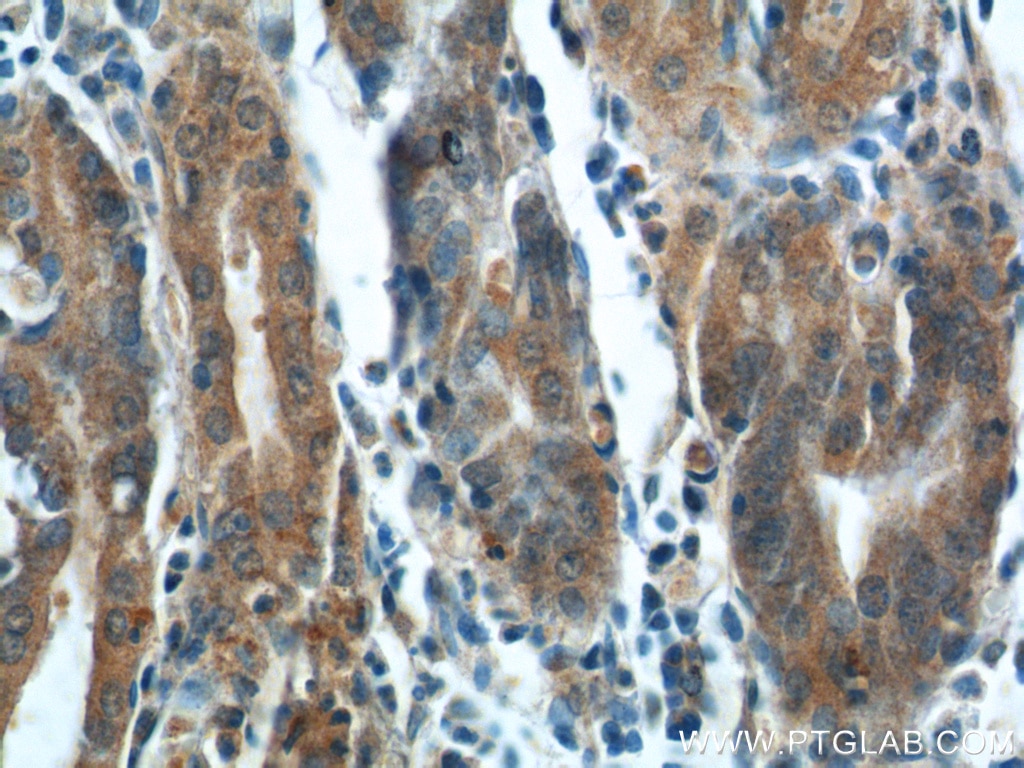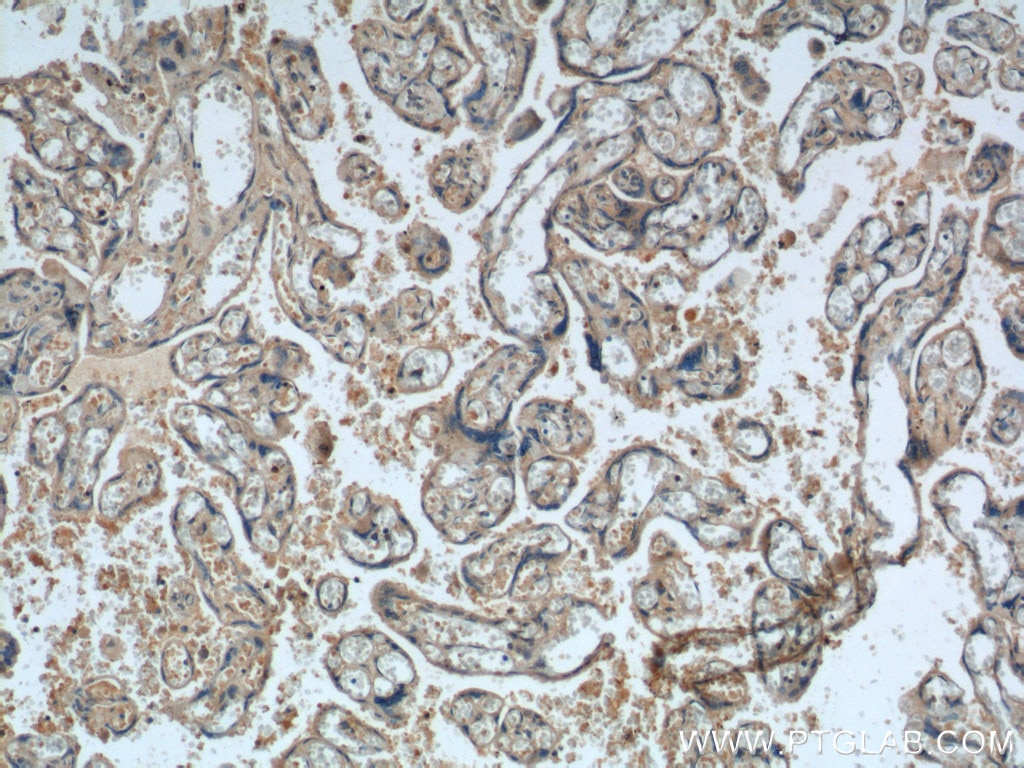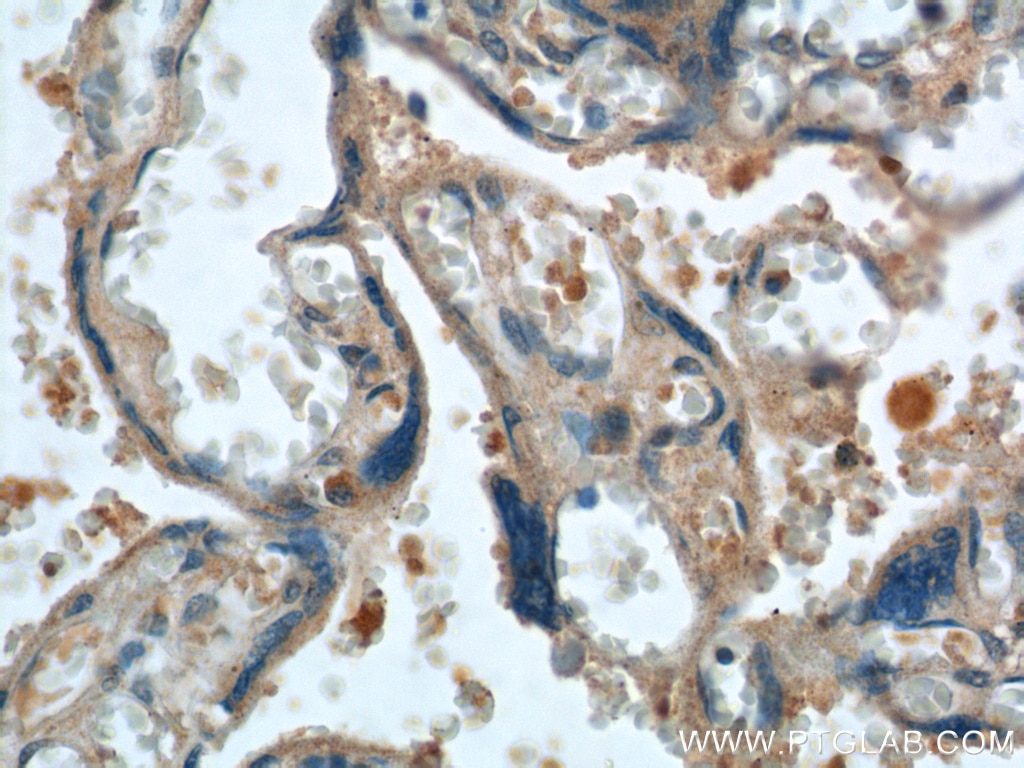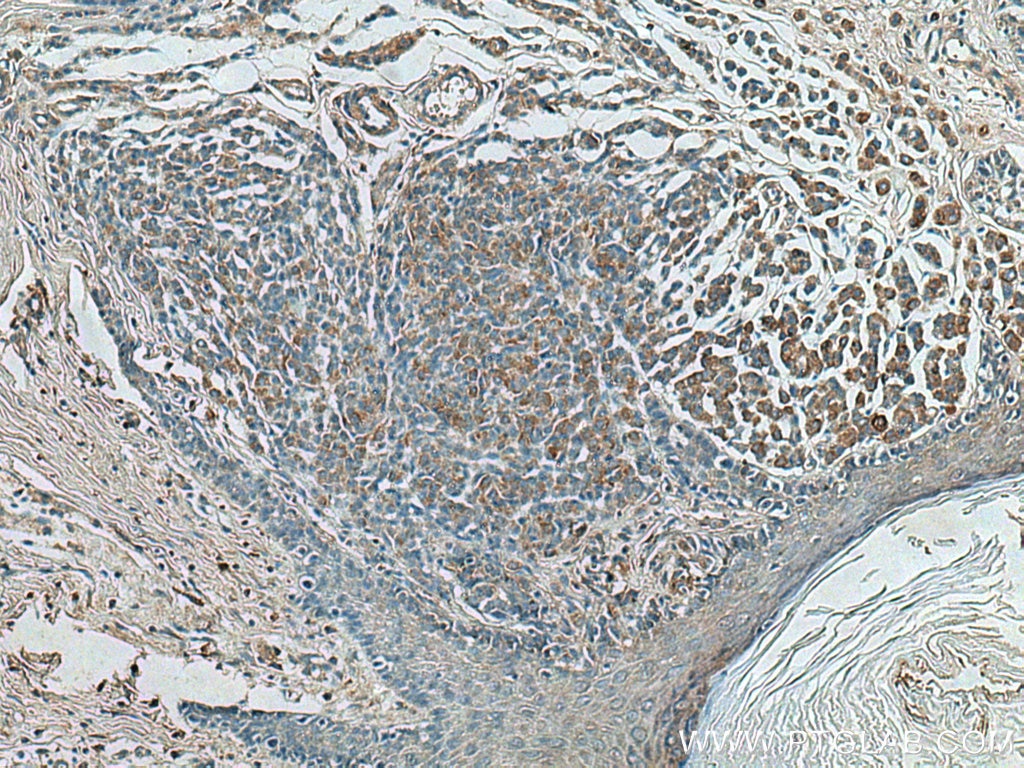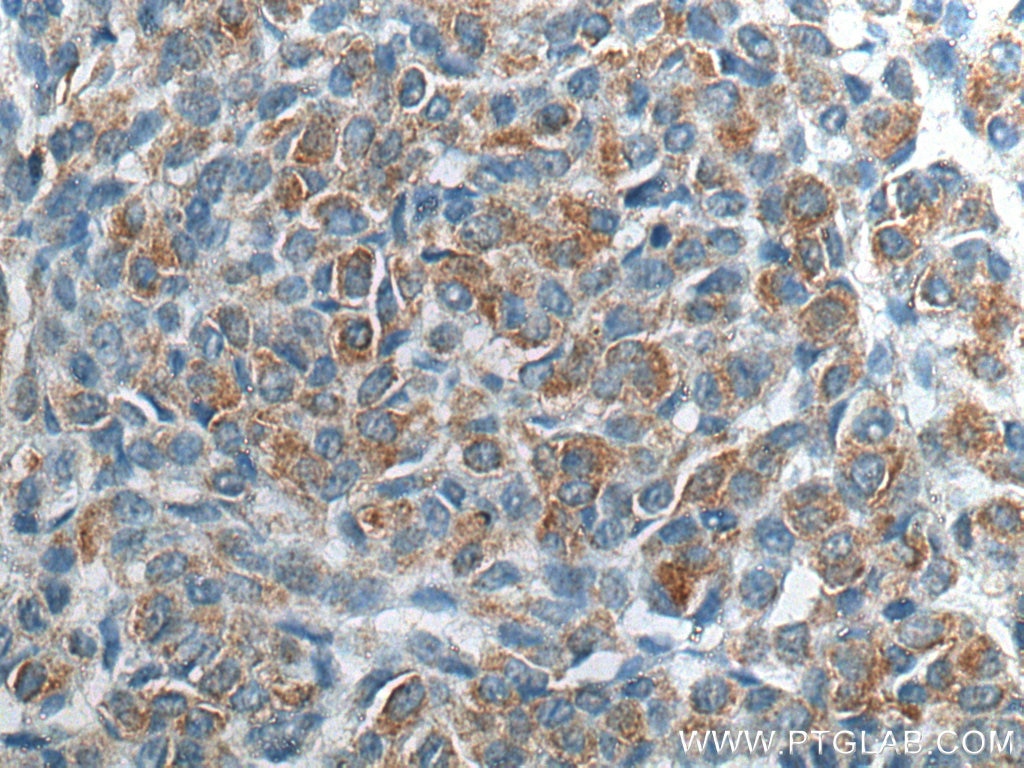- Phare
- Validé par KD/KO
Anticorps Polyclonal de lapin anti-FGF5
FGF5 Polyclonal Antibody for IHC, ELISA
Hôte / Isotype
Lapin / IgG
Réactivité testée
Humain, souris et plus (2)
Applications
IF, IHC, ELISA
Conjugaison
Non conjugué
N° de cat : 18171-1-AP
Synonymes
Galerie de données de validation
Applications testées
| Résultats positifs en IHC | tissu d'estomac humain, tissu de mélanome malin humain, tissu placentaire humain il est suggéré de démasquer l'antigène avec un tampon de TE buffer pH 9.0; (*) À défaut, 'le démasquage de l'antigène peut être 'effectué avec un tampon citrate pH 6,0. |
Dilution recommandée
| Application | Dilution |
|---|---|
| Immunohistochimie (IHC) | IHC : 1:50-1:500 |
| It is recommended that this reagent should be titrated in each testing system to obtain optimal results. | |
| Sample-dependent, check data in validation data gallery | |
Applications publiées
| KD/KO | See 1 publications below |
| IHC | See 6 publications below |
| IF | See 3 publications below |
Informations sur le produit
18171-1-AP cible FGF5 dans les applications de IF, IHC, ELISA et montre une réactivité avec des échantillons Humain, souris
| Réactivité | Humain, souris |
| Réactivité citée | Chèvre, Humain, Lapin, souris |
| Hôte / Isotype | Lapin / IgG |
| Clonalité | Polyclonal |
| Type | Anticorps |
| Immunogène | FGF5 Protéine recombinante Ag12824 |
| Nom complet | fibroblast growth factor 5 |
| Masse moléculaire calculée | 268 aa, 30 kDa |
| Numéro d’acquisition GenBank | BC074858 |
| Symbole du gène | FGF5 |
| Identification du gène (NCBI) | 2250 |
| Conjugaison | Non conjugué |
| Forme | Liquide |
| Méthode de purification | Purification par affinité contre l'antigène |
| Tampon de stockage | PBS with 0.02% sodium azide and 50% glycerol |
| Conditions de stockage | Stocker à -20°C. Stable pendant un an après l'expédition. L'aliquotage n'est pas nécessaire pour le stockage à -20oC Les 20ul contiennent 0,1% de BSA. |
Protocole
| Product Specific Protocols | |
|---|---|
| IHC protocol for FGF5 antibody 18171-1-AP | Download protocol |
| Standard Protocols | |
|---|---|
| Click here to view our Standard Protocols |
Publications
| Species | Application | Title |
|---|---|---|
Mol Ther Nucleic Acids CRISPR Start-Loss: A Novel and Practical Alternative for Gene Silencing through Base-Editing-Induced Start Codon Mutations.
| ||
iScience Commercial dishes with gelatin-free microstructured inserts for elongated stem cell self-renewal and pluripotency | ||
Front Pharmacol Suppression of FGF5 and FGF18 Expression by Cholesterol-Modified siRNAs Promotes Hair Growth in Mice. | ||
Commun Biol Testicular somatic cell-like cells derived from embryonic stem cells induce differentiation of epiblasts into germ cells. | ||
Genes (Basel) CRISPR/Cas9-mediated Disruption of Fibroblast Growth Factor 5 in Rabbits Results in a Systemic Long Hair Phenotype by Prolonging Anagen. |
